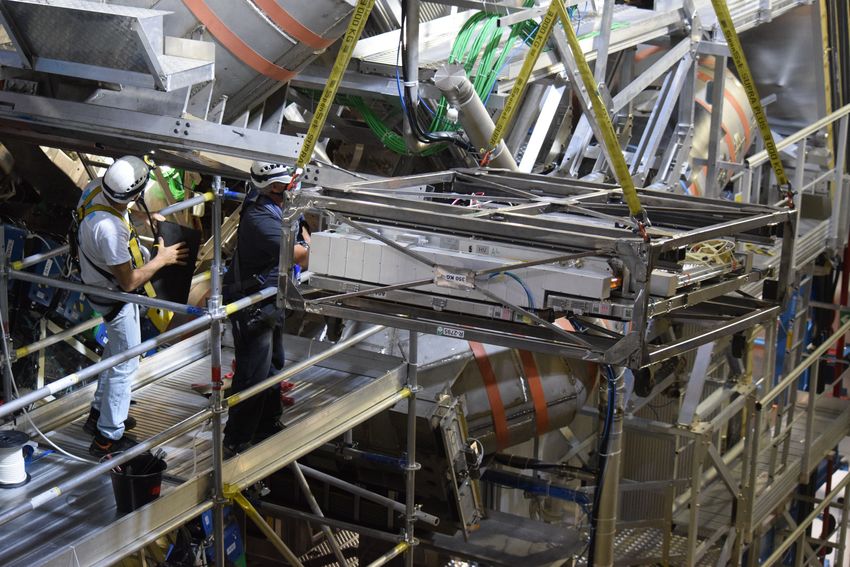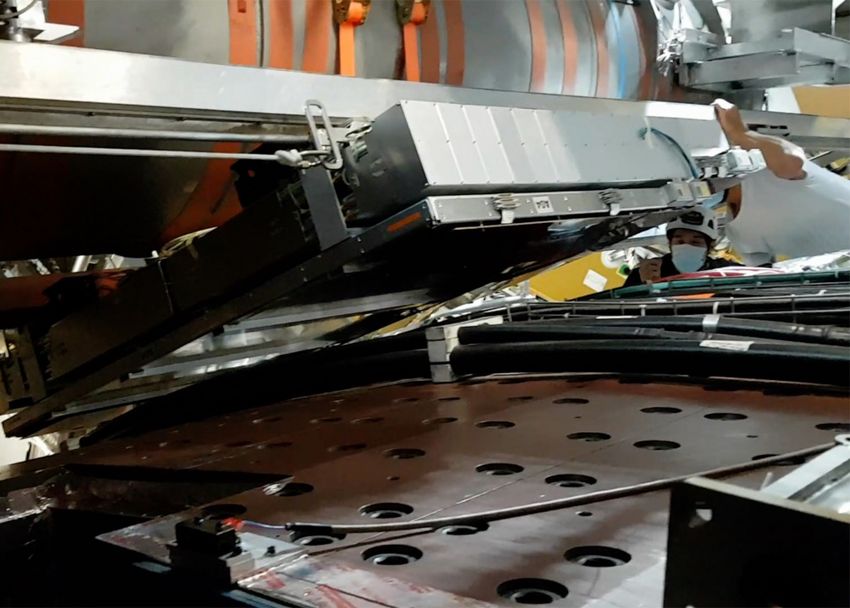In the ATLAS experiment at the LHC, physicists are looking for rare particle decays that could occur when protons collide. However, these can be proven only indirectly. Muons, which are heavier particles than electrons, play an important role here: When a certain number of muons with a defined energy are revealed, conclusions can be drawn about previous decays and the existence of new particles. This was the basis for the discovery of the Higgs boson in 2012.
To back up their results statistically, the scientists measure and analyze millions of particle tracks – day after day. The more particle collisions they can evaluate, the greater their chances of coming across new findings. For this reason, the LHC accelerator is being upgraded for increasingly higher outputs: A major upgrade of the High Luminosity (HL) LHC is scheduled for 2024.
Muon chambers for the LHC turbo version
“This turbo version will accelerate five times more proton packets than it can today. However, the ATLAS muon system will also have to be retrofitted”, says Hubert Kroha, head of the muon spectrometer group at the MPP. Scientists at the MPI for Physics have therefore developed a new, faster muon chamber type in recent years.
“The new generation of instruments are able to read muon signals within only 200 nanoseconds. In other words, four times faster than their predecessors”, explains Kroha. “They can thus process many more events in the same time. The spatial resolution – and thus the measuring accuracy – of the muon impulses is also improved.”
Engineers and scientists are currently mounting eight of these modern chambers. Their higher performance will already come into play in the coming measurement phase (3rd run from 2022 to 2023). Altogether, 100 of these chambers will be built over the next three years at the MPP and universities in the US. They will be integrated into ATLAS during the next long shutdown from 2024 to 2027.
“During this process, the scientists are also replacing the electronics of all existing muon chambers with new and more powerful components”, says Hubert Kroha. “The first chamber with new electronics from the ‘MPP forge’ has just been completed.”

